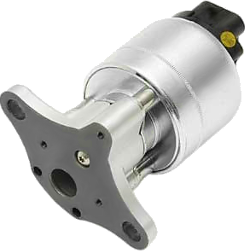The exhaust gas recirculation valve, commonly called an EGR valve, allows some of the exhaust gas to vent back into the intake. This reduces the amount of usable oxygen in the incoming air, but helps reduce combustion temperatures and consume less fuel in normal commute driving conditions.
EGR Function Explained (Video)
It also helps reduce harmful emissions in certain circumstances, but can also clog the intake up with carbon deposits, further reducing the power over time. This carbon build-up can hurt emissions as well, giving the system drawbacks with no benefits in the worst scenario, but can be fully cleaned up by removing the intake manifold.
Diagnosing Struggling Start-Up: EGR Valve Found to be the Issue
In this video, a 2013 Honda Pilot struggles to start, and after checking the stores trouble codes, the EGR valve was found to be having an issue. After cleaning and reinstalling it, the Pilot started up fine.
Clogged EGR Valves
Because of it being the point where the exhaust meets the intake, the valve can get clogged up with carbon deposits. If it gets stuck open, there may be a loss of power and rough idle. If it gets jammed closed, the ECU may expect more air with a lower level of oxygen, and perform poorly as a result. Both will likely cause the "Check Engine" light to come on.
EGR Valves & Performance

Most high-performance engines don't have EGR valves equipped. On engines that were made into high-performance engines, the ECU may have to be reprogrammed to avoid problems with unexpected oxygen levels and to keep the "Check Engine" light from constantly being on.
- The Exhaust System
- Catalytic Converters
